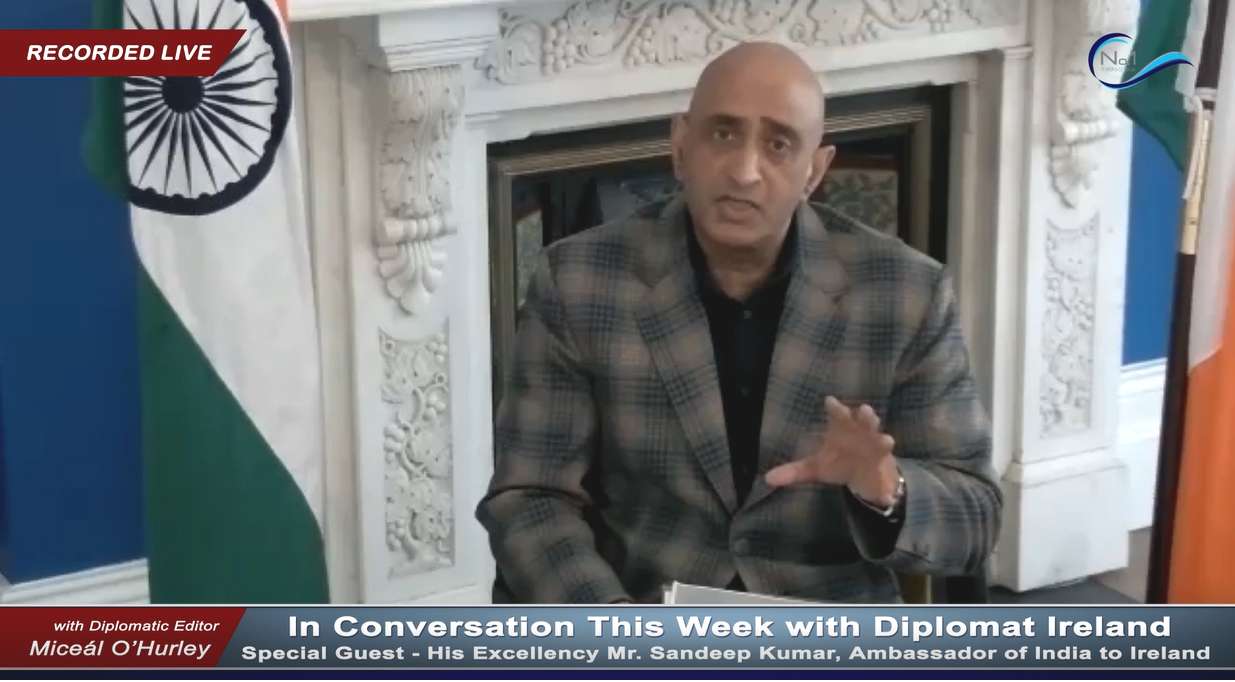by Miceál O’Hurley
BEIRUT — Videos purporting to show Israeli forces destroying the ancient Shrine of the Prophet Benjamin began circulating online Wednesday. The Shrine was located in Mhaibib, a village in Southern Lebanon’s Marjaayoun district in Nabatiyea, approximately 112 kilometers south of Beirut. Ongoing fighting between Israeli forces and Hezbollah fighters has so far prohibited confirmation and documentation of the destruction of the site of pilgrimage for Jews, Muslims and Christians alike. The entire village of Mhaibib is said to have been destroyed by Israeli forces.
Neither Lebanon or Israel has yet to officially comment on reports of the site, or the village, having been reported to be destroyed.
In early October, Israel warned residents of 26-towns in Southern Lebanon, including Mhaibib, to evacuate, citing potential Hezbollah activity for the necessity of evacuations. Israel launched a significant air campaign over Hezbollah strongholds in Southern Lebanon and selective targets in Beirut commencing last month.
The Israeli attacks on Lebanon represent a significant widening of their war in Gaza which began in October 2023 following Hamas attacks on Israeli settlements, concert venues, villages and residential housing. Despite strenuous international and regional efforts, the attacks by Israel in Lebanon represent an escalation of the conflict which began in Gaza and has added to significant regional instability.
To date, some 1,5000 deaths have been reported in Lebanon in addition to thousands being injured. Numerous residences and buildings having been destroyed, particularly in Southern Lebanon and the Beirut neighbourhood of Dahieh where Hezbollah claims significant control. Over 1-million Lebanese are currently internally displaced from their homes in Lebanon. Crucial roadways to Syria have been destroyed hampering external evacuations while ferries to Cyprus, Greece and Türkiye are running intermittently. Commercial air activity at Beirut-Rafic Hariri International Airport has been significantly reduced with some carriers limiting or eliminating flights altogether.
The purported destruction of the Shrine of the Prophet Benjamin follows several decades of conflict in places like Afghanistan, Iraq, Syria and Ukraine where significant architectural, monumental and protected sites of artistic and cultural value have been wantonly destroyed.
UNESCO and other world heritage preservation and protection organisations have attempted to safeguard cultural, religious and artistic treasures across the globe with varying success. According to a 2 October 2024 publication, UNESCO has verified damage to 451 sites since 24 February 2022 including some 142 religious sites, 227 buildings of historical and/or artistic interest, 32 museums, 32 monuments, 17 libraries and 1 archive in Ukraine so far. The Russian invasion of Ukraine’s Donbas and Crimea in 2014, and their full invasion of Ukraine in 2022, has been devastating to the nation’s artistic, cultural, architectural and religious artefacts and treasures.
On Ukraine’s Crimea peninsula, Russia has worked feverishly to conduct excavations at a rate and scale beyond what professionals consider to be either normal or careful. Oksana Lifantii, an archaeologist specialising in Scythian culture, recently told Ukrainska Pravda, “This [such a number of excavations – UP] is quite a lot for such a small region. Before the occupation, there were slightly fewer expeditions in Crimea”. Scythian Gold from the Ust-Almmen necropolis belonging to Ukraine’s Crimea were on loan to a museum in the Netherlands when Russian attempted to illegally annex Crimea and therefore lay claim to its artistic treasures. While Russia lost the claim in international court, Russian State funds were used to plunder the site and in 2017, the burial of a Scythian woman entombed with gold was discovered resulting in Russian media reports boasting, “We don’t need to return that gold; we were able to dig up our Scythian gold”. The scale of documented looting by Russia on Crimean and throughout Ukraine is severely hampered by ongoing combat and Russia’s temporary occupation of Ukrainian territory. Fresh, unauthorised and unlawful excavations continue to produce new finds which are transported to Russia. Being undocumented, such discoveries are far more likely to disappear and their cultural, historic and artistic value remain diminished because of lack of universally recognised cataloguing.
Ukraine claims the eradication of uniquely Ukrainian artefacts are part and parcel of Russia’s attempt to supplant Ukrainian identity as part of what are widely considered acts of genocide against the Ukrainian people.
Afghanistan was particularly hard-hit by the destruction of its ancient artistic and cultural artefacts. Afghanistan’s Russian-friendly regime was supported by Russian forces in the ransacking of The Hadda and the Stupa-monastery complex of Tepe Shortor. Artefacts from these assaults upon Afghanistan’s cultural treasures are now in the possession of the Hermitage Museum in St. Petersburg while others appear occasionally in sales of looted artefacts that occur on the secondary and unregulated art dealer markets.
Also in Afghanistan, Taliban forces destroyed the Bamiyan Buddhas, two monumental 6th-century century statues carved into a cliff in the Bamiyan Valley in the central highlands of Afghanistan in 2001. Pieces of the Bamiyan Buddhas were carted off and sold on the black-market following the destruction thereby defying efforts to reconstruct the ancient statues. According to the 2003, Fifth World Archaeological Congress, the Taliban Minister of Culture accompanied by Mollah Khari Faiz ur-Rahamn, ordered the storeroom of the National Kabul Museum be opened in 2001. According to a staff member who witnessed the scene, “As they entered the storeroom, they snarled in excitement and started to smash everything while chanting ‘Allahu Akbar’”. Looting and destruction continued throughout the US led Afghan War 2001-2021.
Iraq suffered significant losses of their cultural, religious, architectural, artistic and cultural heritage during conflicts that raged in the country, particularly since 2001. Despite urgent pleading from the American Council for Cultural Policy, US forces would not give guarantees to safeguard significant cultural or artistic sites in Iraq during the 2003, US-led war. While the US and coalition partners did refrain from bombing Baghdad’s Iraq Museum, little if anything discernable was done to safeguard it when US forces occupied the city. Subsequently, the museum was severely looted between the 10th and 12th of April. When a number of museum staff returned to the building on 12 April they were left to fight-off looters and were left on their own until 16 April when US forces finally deployed to create a protective perimeter around the museum. In addition to the theft of significant objects on display, looters specifically targeted some 3,100 excavation pieces, many of which had yet to be catalogued, making them prime pieces to sell more easily on the black market.
The rise of Islamic terrorist groups also contributed to significant injury to Iraq’s heritage. Prior to the Daesh assaulting Northern Iraq, it published on social media a list of 40-monuments located in Nineveh province which they declared were to be destroyed by them. The “purification” list published by them was broad and extensive. Between 2014-2016, the Daesh had destroyed 41-buildings of historical and cultural value in Mosul. Another 114-cases of annihilated Islamic period heritage have been confirmed in Nineveh province alone.
Syria fared no better during recent conflicts. From the damage at Krak des Chevaliers to the site at Tell Sheikh Hamad to the museum of Beit Ghazaleh in Aleppo, Syria has lost or experienced damage to an estimated 23% of its historic, cultural, artistic and architectural sites.
While the UN and other international bodies have attempted for decades to limit such destruction, damage or loss to such artefacts there is no guarantee that States subscribing to such efforts guarantees their preservation or even adherence to the general principles regarding the unlawful destruction of such sites, collections or artefacts. On 4 January 2020, then US President Donald Trump sent a Tweet which threatened to destroy targets in Iran which he described as, “some at a very high level & important to Iran & the Iranian culture”. Trump’s threat was universally condemned as threatening to commit a war crime by targeting cultural sites without any indication they had been coopted for military use.
Under Article 8 of the Rome Statute (1998), a court has jurisdiction to prosecute the war crime of “intentionally directing attacks against buildings dedicated to religion, education, art, science or charitable purposes, historic monuments, hospitals and places where the sick and wounded are collected provided they are not military objectives”.
The need for the international community to be more vigilant about the protection of such artefacts and avoiding the intentional attempt at erasure of collective cultural identity is abundantly evident. However, few prosecutions have issued to hold parties accountable for such miscreant criminality. In the context of war, there is a tendency to discount the destruction or defacement of artefacts when extrajudicial murder, rape, targeting of critical civilian infrastructure, child kidnapping, torture and other events take place.
While the 1954 Hague Convention for the Protection of Cultural Property in the Event of Armed Conflict was a vast leap-forward from the adoption of Article 27 of the 1899 and 1907 Hague Regulations for the special protections of cultural property, the lack of prosecutions has only fueled the rise of more such conduct and failed altogether to serve as a deterrent.
















































